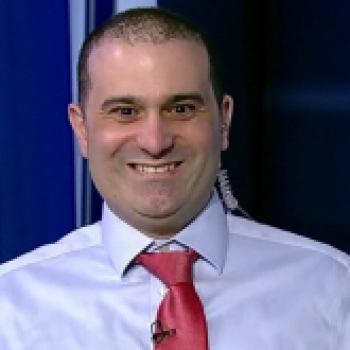
- All Instrument Types
- Indices
- Equities
- ETFs
- Funds
- Commodities
- Currencies
- Crypto
- Bonds
- Certificates
Please try another search

Dollar Pops, China Is Ready To Deal: Is The Rally Durable?

Kathy Lien, Managing Director Of FX Strategy For BK Asset Management
Daily FX Market Roundup October 7, 2019
There are 3 events that could trigger a major rally for the US dollar this week. US-China trade talks, the FOMC minutes and comments from Federal Reserve Chairman Jay Powell. This morning, investors were skeptical about trade because Vice Premier He suggested that China would not relent on their industrial policy and state subsidies. While that remains the case, by the end of the day, the Chinese Commerce Ministry said they are ready for a partial deal on points agreed upon already such as purchases of US agricultural products. They will also set out a timeline for working on a broader deal next year. Changes to intellectual property laws or government subsidies however are completely off the table.
The Trump Administration has not indicated whether this offer is acceptable but USD/JPY traded sharply higher on the belief that President Trump will take the win to distract from the impeachment inquiry and drive stocks higher. The big question is what that really means – will the US reward the agreement with a gradual reduction in tariffs. If they do, the rally in USD/JPY and all other Japanese yen crosses could be durable especially as rate-cut expectations fall. But if the US rejects the olive branch and presses for bigger commitments from the Chinese or refuses to reduce tariffs, the dollar will reverse its gains quickly. As we await the US’ response, China trade headlines will continue to dominate dollar flows.
Meanwhile we don’t expect much from Fed Chairman Powell’s comments – on Friday he cast doubt on the need for additional easing by describing the underlying economy as strong but in the context of positive trade headlines, less dovish comments could trigger a larger rally for the dollar. Traders are pricing in a 70% chance of a rate cut later this month and if the Fed minutes cut those expectations further, we could see USD/JPY hit 108. Considering that 2 members voted against lowering rates at their last meeting, the minutes should be less dovish. Tomorrow’s inflation report will take a back seat to these bigger stories because price pressures are generally subdued.
The prospect of a partial trade agreement should have also driven the Australian and New Zealand dollars higher but we did not see much reaction in either currency. Instead, both currencies were the weakest performers today, ending the NY session near the day’s lows. This along with the lackluster moves in the Dow reflects skepticism as investors don’t see President Trump taking steps to reduce tariffs readily.
The other big story today is the setback to a smooth Brexit. Lord Pentland ruled that Prime Minister Johnson would not be forced to request a Brexit extension from the EU. He claimed that the PM had agreed to abide by the law and there was no need for “coercive orders” to force the government to do so. Investors were disappointed because a decision to push the Prime Minister’s hand would have ruled out a chaotic exit on October 31. Now we’ll have to see whether Johnson stays true to his word. He says the ball is in the EU’s court, since he’s submitted his proposals. Without being forced to ask for delay, the chance of a no-deal Brexit is 60% or more.
The euro came within a few pips of 1.10 despite weaker German factory orders. Industrial production numbers are scheduled for release tomorrow and ar likely to be weak. While EUR/USD is a risk currency, the prospect of back-to-back disappointments in German data means any rally should be capped at 1.10.
Related Articles

The euro EUR/USD has surged after European leaders announced big spending plans for defence and infrastructure. This comes at a time when President Trump acknowledges that tariffs...

As markets assess the implications of the Zelenskyy-Trump clash on Friday, the focus today is whether US tariffs on Mexico and Canada will go ahead. The FX market is not pricing...

GBP/USD is consolidating around 1.2447 on Wednesday as traders hold back, awaiting key UK economic data releases later this week. Key factors influencing GBP/USD Earlier this...
Are you sure you want to block %USER_NAME%?
By doing so, you and %USER_NAME% will not be able to see any of each other's Investing.com's posts.
%USER_NAME% was successfully added to your Block List
Since you’ve just unblocked this person, you must wait 48 hours before renewing the block.
I feel that this comment is:
Thank You!
Your report has been sent to our moderators for review





Add a Comment
We encourage you to use comments to engage with users, share your perspective and ask questions of authors and each other. However, in order to maintain the high level of discourse we’ve all come to value and expect, please keep the following criteria in mind:
Perpetrators of spam or abuse will be deleted from the site and prohibited from future registration at Investing.com’s discretion.